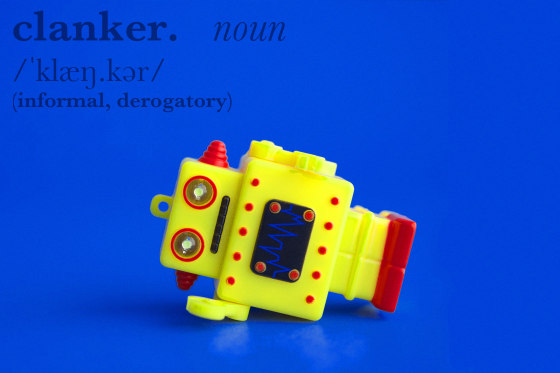“James Frey Likes Smart People” – Dan
Record East Hampton Library Authors Night 2025 Crowd Admits They Read Books

George Hamilton is a groupie. Maureen Dowd is in here somewhere. James Frey likes smart people. Dr. Ruth is still alive, in a way. And Christie Brinkley wants Bobbi Brown’s book. Hold on, the Uptown Girl is posing for a selfie. Okay she’s back. The age-defying super model joined a record crowd for Authors Night in East Hampton’s Herrick Park Saturday.
Hold on, she’s posing again. Hey, she’s good at it.
I’m back mopping my brow and snaking through the crowd of A-List authors and their fans to benefit the East Hampton Library. “Maureen Dowd is here!” gushes Jill Brooke. The former CNN anchor has a website called FlowerPowerDaily so she’s looking for gardening tomes. “It’s like catnip. You discover books you may not have known about and meet the authors.”
AIwood
AI Isn’t Coming for Hollywood. It’s Already Arrived
An early winner in the generative AI wars was near collapse—then bet everything on a star-studded comeback. Can Stability AI beat the competition?

LADY GAGA PROBABLY wasn’t thinking that a coup would unfold in her greenhouse. Then again, she was cohosting a party there with Sean Parker, the billionaire founder of Napster and first president of Facebook.
It was February 2024, and the singer had invited guests to her $22.5 million oceanside estate in Malibu to mark the launch of a skin-care nonprofit. One of the organization’s trustees was her boyfriend, whose day job was running the Parker Foundation. In the candlelit space, beside floor-to-ceiling windows that looked out over the Pacific, Parker’s people mingled with Gaga’s, nibbling focaccia and branzino alla brace to music from a string quartet (Grammy-winning, of course).
Authors Night Hamptons 2025
Authors Night Shines Bright in East Hampton

As the founder of BookTrib (and a book publicist with three decades of experience in the literary world), I’ve attended my fair share of fantastic book events. But there’s something undeniably special about the star-studded East Hampton Authors Night…
Christie Brinkley, whose new memoir Uptown Girl tells the story of her meteoric rise to fame, flashed her million-dollar smile.
Griffin Dunne, author of The Friday Afternoon Club (a perfect self-narrated audiobook listen that gives readers an inside look at the Los Angeles literary scene; highly recommend!), charmed the crowd with his Hollywood good looks and warm smile.
James Frey made a splash with his latest novel Next to Heaven, a dark thriller about a wealthy Connecticut town that sounds astonishingly similar to BookTrib HQ’s hometown of Westport, CT. (Come visit, James! We have questions!)
Odendaal’s Save
“Frictionless Solipsistic Efficiency”. Cool.
AI Demand-Shaping And The Frictionless Rub Of Solipsistic Efficiency
By Emil Steiner

In 1897, painter Frederic Remington wired New York Journal publisher William Randolph Hearst from Cuba with bad news. There was nothing to see, no war to illustrate. Hearst’s infamous reply: “You furnish the pictures, and I’ll furnish the war.” The apocryphal anecdote endures as a cautionary tale of media’s power to shape reality to its owners’ interests.
Broadly speaking, historians agree that the sensationalist reporting of Spanish atrocities in Cuba and the mysterious sinking of the USS Maine, which typified the Yellow Journalism era, contributed to the U.S. decision to enter the Spanish-American War in 1898. Hearst and other publishers, like Joseph Pulitzer, saw circulation spikes from their vivid, lurid, and constant coverage, facilitated by new technologies that brought battlefield color to readers at telegraphic speed. Narrative precedes truth. Sensation succeeds substance.
Modern Bleakness
C.S. Lewis in the Age of Bleakness
Awe, Wonder and the Power of Enchantment
By Josh Appel
In the age of modernity, we find ourselves confronting a familiar affliction: bleakness. Our lives are marked by disillusionment. We doom-scroll, our eyes glazed over, while once useful dopamine receptors quietly shoot their last remaining endorphins. The YouTube rabbit hole is not so much an experience in enjoyment as much as it is a reflex of our current era. We watch videos of others cosplaying luxurious livelihoods all while sitting in a darkened room hoping for something more. And then what few icons we may look to as heroes the world often tells us are evil. To put it simply: in the era of algorithms and digital experiences we have become bored and uninspired.
The modern age has long been diagnosed as disenchanted. Max Weber famously spoke of the “disenchantment of the world” by which rationalization and secularization erode the magical and sacred dimensions of life. Jürgen Habermas extended this analysis, noting how modernity marginalizes religion from public reason, confining it to the private sphere thus stripping us of a shared moral tradition and language. Ernest Gellner added that industrial society, by its very logic, tends to suppress myth and tradition in favor of utilitarian norms. All three observed a flattening of experience — a world explained but no longer felt. However, C.S. Lewis, one of the greatest writers of the 20th century and a religious apologist, noted that disenchantment also led to modern cynicism.
The Coolest Night In The Hamptons
Authors Night: The Premier Literary Event Of The Hamptons

On Saturday, August 9, the East Hampton Library will present its 21st Annual Authors Night fundraiser. One of the most popular and celebrity-studded events of the Hamptons’ summer calendar, Authors Night features 100 authors across all genres. The “Premier Literary Event of the Hamptons” has grown over its history to become one of the most successful celebrations of books and authors in America, and one of the largest library-author events of its kind in the country.
Participation authors include Lili Anolik, Elyce Arons, Sean Avery, Barry Avrich, Hilaria Baldwin, Kelly Bishop, Christie Brinkley, Bobbi Brown, Daria Burke, Alafair Burke, Nathaniel Butler, Blue Carreon, Robert A. Caro, Tom Clavin, Griffin Dunne, Maureen Dowd, James Frey, Paul Goldberger, Michael M. Grynbaum, Alex Guarnaschelli, Alice Harris, Helen A. Harrison, Madeleine Henry, A.M. Homes, Molly Jong-Fast, Lola Kirke, Nicola Kraus, Setha Low, Thomas Maier, Mary Ellen Matthews, Rue Matthiessen, Susan Morrison, David Netto, Annabel Monaghan, Zibby Owens, Owen Pataki, Chris Pavone, Dr. Nicholas Perricone, Jane L. Rosen, Jill Santopolo, Jessica Seinfeld, Peter Som, Christina Tosi, Neil deGrasse Tyson, Glyn Vincent, Cynthia Weiner, Chris Whipple, Thomas Chatterton Williams, Tia Williams, Julian Zelizer, and many more.
Mr. Prince & The Esquires
Richard Prince’s Wily 7-Hour ‘Deposition’ Video Is an Instant Classic
Under oath, with big money on the line, the appropriation pioneer puts in a gallant performance.

I know that I am going to lose many of you right here at the start, but I have to insist that you watch the nearly 7-hour video deposition of Richard Prince that the artist recently exhibited in Rome.
It is an unexpectedly captivating endurance piece—frustrating, illuminating, baffling, and sometimes pretty funny. The Pictures Generation pioneer, who just turned 75, is one of our sharpest artists, but he is also prolific and uneven. Deposition (2025) is Prince at his best. I savored it in hour-long chunks over a week, and it reminded me of his rare abilities, while in some small way refreshing my faith in art.
Let’s set the scene….
Dial-up Dead
AOL dial-up says goodbye. Without Apple, it might not have changed the world
The longtime service took root on Apple computers 40 years ago. Here’s the story.
By Roman Loyola
You young whippersnappers out there, pull up a chair and let me tell you about a more innocent time. Way before you could connect to the internet out of thin air, you had to use what was called a dial-up connection. A box called a modem was connected to your computer, and it used a phone line to call a service provider that would give you access to a bulletin-board service (BBS; think of a BBS as an early form of Reddit). It took a few years before the BBS gave way to the web.
There were several dial-up service providers, but there was one that ruled them all: America Online, which became widely known as AOL. However, the days of AOL as a dial-up service provider are now over. According to an AOL support document, the company (it’s now part of Yahoo, which is owned by Apollo Global Management) has determined that the dial-up service will end on September 30.
More Robber Barons?
Maybe Our Railroads Need Some Robber Barons
Is Florida’s Brightline a remedy for our ailing rail system?

Americans like to believe we have the best of everything. But there’s one exception where people are willing to admit we fall short: high-speed rail. Americans travel to Europe or Japan or China, enjoy their high-speed rail experience, and wonder why we don’t have that here.
Amtrak’s Acela line in the Northeastern United States technically has sections that reach high-speed service levels but is far below the global standard. An Amtrak-led consortium says that it would cost $117 billion to upgrade the line to a true high-speed service. This is a cost level that’s far out of line with global norms, but sadly consistent with the extraordinary costs we’ve come to expect from American rail projects. The New York Times once called the Second Avenue Subway extension in New York the most expensive mile of subway track on earth for example. American rail projects cost multiples of what other countries spend; the Times, for example, notes that the East Side Access rail project in New York was seven times the global average construction cost.
C’est toujours aussi bon
Is Perrier as pure as it claims? The bottled water scandal gripping France
by Hugh Schofield
France’s multi-billion euro mineral water companies are under the spotlight because of climate change and growing concerns about the industry’s environmental impact.
At issue is whether some world-famous brands, notably the iconic Perrier label, can even continue calling themselves “natural mineral water”.
A decision in the Perrier case is due in the coming months. It follows revelations in the French media about illicit filtration systems that have been widely used in the industry, apparently because of worries about water contamination, after years of drought linked to climate change.
Skynet Coming
James Cameron warns of ‘Terminator-style apocalypse’ if AI weaponised
Humans face three existential threats, from super-intelligence, nuclear weapons and the climate crisis, says blockbuster director as he announces new Hiroshima project
The director James Cameron has warned that the use of artificial intelligence in a global arms race could lead to the kind of dystopia fictionalised in his Terminator franchise.
Speaking to Rolling Stone to promote the publication of Ghosts of Hiroshima, an account of the first atomic bombing by bestselling author Charles Pellegrino which Cameron intends to adapt for the big screen, the film-maker behind three of the four highest-grossing films of all time (Titanic and the first two Avatar films), said that although he relies on AI professionally, he remains concerned about what might happen if it was leveraged with nihilistic intent.
“I do think there’s still a danger of a Terminator-style apocalypse where you put AI together with weapons systems, even up to the level of nuclear weapon systems, nuclear defence counterstrike, all that stuff,” Cameron said. “Because the theatre of operations is so rapid, the decision windows are so fast, it would take a super-intelligence to be able to process it, and maybe we’ll be smart and keep a human in the loop.
Born To Be Wired
The Confessions of John Malone, Media’s Most Misunderstood Mogul
In this exclusive excerpt from his new memoir ‘Born to Be Wired,’ the battle-scarred billionaire candidly reflects on his (mostly) friendly rivalries with Reed Hastings, Rupert Murdoch and Ted Turner and how he built a sprawling empire while living with autism.
BY JOHN MALONE

The most valuable assets in any business are people and relationships.
I may have neglected to appreciate this at the time, when we were down in the fray. Now that I am a bit older and slowing down, just a little, I have realized that, all along, the most important element was who was involved, not what. The people whom I befriended, learned from, and fought against — rather than the deals or the payoff — gave me the most satisfaction. And the right people produced the highest upside — giving my journey meaning and enriching my knowledge of the world.
It has been enormously exciting and at the same time gratifying to play a role in the digital revolution. Our original intent was to deliver broadcast TV signals to far-flung rural valleys and mountainous terrain that antennas couldn’t reach. That very same cable evolved into the backbone of the broadband network better known today as the internet, three decades after we at Tele-Communications began laying down lines.
Clankers
Is an AI backlash brewing? What ‘clanker’ says about growing frustrations with emerging tech
A slur for robots and AI has emerged online in recent weeks, offering some sense of growing societal anxiety with increasingly capable technology.
By Jason Abbruzzese and Rob Wile

It’s a slur for the AI age.
“Clanker,” a word that traces back to a Star Wars video game, has emerged in recent weeks as the internet’s favorite epithet for any kind of technology looking to replace humans. On TikTok, people harass robots in stores and on sidewalks with it. Search interest for the term has spiked. On X, Sen. Ruben Gallego, D-Ariz., used the term last week to tout a new piece of legislation.
“Sick of yelling “REPRESENTATIVE” into the phone 10 times just to talk to a human being?,” he posted on X. “My new bill makes sure you don’t have to talk to a clanker if you don’t want to.”
The Eames Institute of Infinite Curiosity,
The Creative Legacy of Ray and Charles Eames Finds a New Home
Architects Herzog and de Meuron will design the new museum in the heart of Marin County.
by Min Chen

Ray and Charles Eames revolutionized midcentury design—now, their legacy is getting a new home. A museum opening in California will celebrate the couple’s singular creative universe and its lasting impact on art and design.
The Eames Institute of Infinite Curiosity, the organization dedicated to stewarding the Eameses’ legacy, will be transforming the former Birkenstock campus in Marin County into a museum. Swiss architect giant Herzog and de Meuron has been tasked with converting the 88-acre site into a public space set to host exhibitions, workshops, educational programming, and retail offerings.
Shooting The Moon
The asteroid that will spare Earth might hit the moon instead. What happens if it does?
The asteroid known as 2024 YR4 is out of sight yet still very much on scientists’ minds.
The building-sized object, which initially appeared to be on a potential collision course with Earth, is currently zooming beyond the reach of telescopes on its orbit around the sun. But as scientists wait for it to reappear, its revised trajectory is now drawing attention to another possible target: the moon.
Discovered at the end of 2024, the space rock looked at first as if it might hit our planet by December 22, 2032. The chance of that impact changed with every new observation, peaking at 3.1% in February — odds that made it the riskiest asteroid ever observed.
Tinshemet Cave
A 100,000-year-old burial site in Israel is changing what we know about early humans
SHOHAM, Israel (AP) — Archaeologists believe they have found one of the oldest burial sites in the world at a cave in Israel, where the well-preserved remains of early humans dating back some 100,000 years were carefully arranged in pits.
The findings at Tinshemet Cave in central Israel, published in an academic journal earlier this year, build on previous discoveries in northern Israel and add to a growing understanding of the origins of human burial.
Of particular interest to archaeologists are objects found beside the remains that may have been used during ceremonies to honor the dead and could shed light on how our ancient ancestors thought about spirituality and the afterlife.
They Aren’t Going To Need Us
WILD VIDEO SHOWS ROBOT CHANGING ITS OWN BATTERY
As we continue on our path towards a potential future filled with tireless humanoid robots staffing factory floors, companies are looking to solve a major pain point of the tech: a limited battery life.
Chinese company UBTECH recently showed off its bipedal Walker S2 robot contorting its arms to hot swap one of its battery packs — a “world’s first,” seemingly — which means the 95-pound automaton could technically work 24 hours a day, an integral part of fully automated “dark factories” that never need to keep the lights on.
Video footage shows the robot walking up to a rack of swappable batteries. After unnaturally flipping its arms around, the automaton replaces one of its two battery packs in its back before going on its merry way.
Ozzy Gone
Black Sabbath frontman Ozzy Osbourne dead at 76
The heavy metal legend recently played his final concert on July 5.
Ozzy Osbourne, the pioneering heavy metal singer and Black Sabbath frontman whose star turn on reality TV endeared him to a new generation of fans, has died, his family announced Tuesday. He was 76 years old.
“It is with more sadness than mere words can convey that we have to report that our beloved Ozzy Osbourne has passed away this morning,” the family said in a statement signed by Osbourne’s wife Sharon, as well as his children Jack, Kelly, Aimee and Louis. “He was with his family and surrounded by love.”
They added, “We ask everyone to respect our family privacy at this time.”
News of Osbourne’s death comes 17 days after he performed his final show in Birmingham, England, alongside his former Black Sabbath bandmates at the Back to the Beginning benefit concert.
Where is Six?
Why The I Am Number Four Franchise Was Canceled
BY JOE ROBERTS
Adapting young adult fiction has been a reliable approach for Hollywood, especially in a post-“Twilight” world. That stupid lightning in a bottle phenomenon gave rise to multiple imitators, whether it was books or adaptations of those books — some of which were more successful than others. 2011’s “I Am Number Four” was one of the less successful examples.
Directed by D.J. Caruso (“Disturbia,” “Eagle Eye”), the science-fiction action film was based on the 2010 novel of the same name. The book itself was written by Pittacus Lore (a collective pseudonym for authors James Frey and Jobie Hughes) and represented the inaugural Lorien Legacies novel in what is a seven-novel series that has also produced multiple spin-off and sequel series. Even before the book eventually became a hit, though, a bidding war had erupted for the film rights. In June 2009, J. J. Abrams faced off against Steven Spielberg and Michael Bay for a shot at adapting the property, with the latter winning out in the end. HarperCollins won the book rights soon after, and “l Am Number Four” spent seven weeks at number one on the children’s New York Times bestseller list.
Sneak Peaking
Galley Envy
Could the most coveted object of the summer be an uncorrected manuscript you can’t even buy?

Paperback advance reader copies were once sent to critics and booksellers to secure review attention and favorable retail placement. More recently, they have been showing up in the hands of actors and influencers, tucked into designer totes, perched on beach chairs, or featured on Instagram Stories shot in Montauk, resting on linen-covered laps beside sweating glasses of wine. What used to be industry ephemera has become the status galley, a new form of cultural currency.
“I think that the human condition is to show that you have something before someone else, especially if it’s desirable,” says Chris Black, the co-host of the popular podcast How Long Gone.“But I also think, with books, it makes you seemingly smart or at least look smart. And that’s in addition to being ahead of the curve, which I think is always something we’re striving for.”
Walk The Day Awake
“The Surprising Benefits of a Morning Walk.”
Impact of morning walk on Physical and Mental Health
by Mj writes
It is widely known that morning walks can help your physical as well as your mental health start a new day on the right note. Daily morning walking helps in the improvement of cardiovascular health, as it acts as a regimen that regulates blood circulation, blood pressure, and cholesterol levels. It also helps exercise burning of calories to achieve the required amount of energy needed in a calorie reduction process, a prerequisite for achievement of a slender body.
From these effects of walking, it is evident that it has positive impact on muscles as well enhancing the health of joints particularly for people experiencing arthritis or any other joint conditions. It also strengthens musculoskeletal and postural structures and thus decreases the likelihood of falls in anyone, more particularly the elderly.
Beyond “The Bird”
New Canaan’s Notorious Neighbor – James Frey’s Fictional Drama Hits Close to Home
by Jill Johnson

THE APPROACH TO JAMES FREY’S HOUSE FEELS LIKE A DRIVE THROUGH THE PAGES OF HIS LATEST BOOK
The landscape unfolds with rambling farmhouses and faux French chateaus—each boasting a dozen bathrooms and perimeters marked by quaint fieldstone walls that quiet the opulence. It’s particularly picturesque in the bloom of spring, as perfect as New Bethlehem, the fictional town where Frey’s book, Next to Heaven, is set.
It’s no secret that the setting is modeled on New Canaan; the town’s history, outlined in detail by Frey, and its shops, landmarks and parks mirror our own. But are the characters ours, too? That’s the question that left some residents sleepless in their Frette linens as they anticipated the book’s release in June. And now that the juicy novel is out, reading lights are burning bright across the “Next Station to Heaven.”
In his newest release, Frey draws from the salacious novels of Jackie Collins and Danielle Steele—surprising inspirations for an author who says he pursued writing because of men like Henry Miller, Jack Kerouac and Kurt Vonnegut. But Frey is not what one might expect from a man quick to give the world the middle finger.
Frey’s neighborhood is dotted with the occasional modern home, placing us squarely in The Ice Storm country. New Canaan was also the setting for Ang Lee’s 1997 film based on Rick Moody’s eponymous novel about a key party that wreaks havoc on its characters’ lives and community. Next to Heaven features its own spouse-swapping shindig. It’s the kind of thing that can make a small town edgy. Was it based on an actual swingers party? My mission would be to find out.
Pickle Golf
Golf’s Answer to Pickleball Is Spreading Across the US
Park golf is picking up steam
There’s a sport gaining ground in the United States that has numerous similarities to an already-popular sport here, but with slightly different gear and played with larger balls. If you’re thinking to yourself, “Yeah, we know about pickleball already,” well, it’s not pickleball. The sport is park golf, developed in Japan in the 1980s and beginning to make its presence felt globally.
One park golf course recently opened in the New York metropolitan area — specifically, at Great Gorge Golf Club in Vernon, New Jersey. The club in question has a long history (including an early connection to the Playboy Club) and currently touts the presence of a Tom Fazio-designed course on the premises. As NJ.com’s Rob Jennings reports, though, that’s no longer the only game in town.
Bring Back Tree Forts!
LET YOUR KID CLIMB THAT TREE
It could actually make them safer.
By Henry Abbott

A bunny, small enough to nestle in a cereal bowl, has recently started hanging out in my backyard. Now and again, it nibbles a plant or lies in the sun. Mostly, it explores the limits of movement, zooming, darting, feinting, and trundling through bushes. Once, I saw it corner so hard that it sprayed mulch in a giant, messy arc. A human kid who did that would almost certainly be called inside to clean up. But I haven’t seen the adults in this bunny’s life in weeks; the baby has carte blanche. If only more of the kids I know could be so lucky.
Wild animals are the best movers on the planet, and little ones spend much of their time frolicking, fighting, leaping, and climbing. From birth, human children share animals’ potential for wild movement; left to their own devices, they would presumably tumble about like puppies. But more and more, they do nothing of the sort.
Dialogo de Cecco di Ronchitti da Bruzene in perpuosito de la stella Nuova
Historic Galileo Manuscript Just Set a New Auction Record
The Italian polymath’s first publication reveals his bravery in challenging established doctrines with radical scientific ideas.

Even in the league of genius polymaths, Italian astronomer Galileo Galilei enjoys legendary status. He was the first to systematically study space with a telescope and his inventions include the pendulum clock and the geometric compass. It is no surprise that his works are a hot commodity on the few occasions they come to market.
The celebrated scientist set a new auction record yesterday with an exceedingly rare first edition of his early 17th-century publication Dialogo de Cecco di Ronchitti da Bruzene in perpuosito de la stella Nuova. The landmark achievement of early modern science sold for an impressive £1.1 million ($1.5 million) at Christie’s London’s Valuable Books and Manuscripts sale on July 9. This figure roughly doubled the presale estimate of £500,000–£700,000 ($680,000–$950,000) (final prices include buyer’s fees, estimates do not).
Glass House Summer 2025
Here’s Everything You Missed at the Glass House’s Summer Party
Honoring the late Gaetano Pesce, the annual event in New Canaan brought together a cadre of guests across art, design, and literature for a celebration featuring new exhibitions and a lively dance performance.
by Sam Falb

The Glass House welcomed a design-forward crowd to New Canaan for its annual Summer Party—a vibrant afternoon of art, architecture, and tribute. Honoring the late Gaetano Pesce, the gathering debuted Big Surprise 2, a limited-edition resin vase created with Italian furniture design firm Meritalia and inspired by two Feltri chairs from the host’s own collection.
DJ Pete Brockman set the tone, while Max Mara’s Whitney Bag activation and gelato cart gathered curious eyes across the lawn. As attendees including James Frey and Paul Goldberger; designers Sophie Lou Jacobsen and Maximilian Eicke; artists Deborah Brown and Naudline Pierre; Aldrich Museum Director Cybele Maylone, creative director and curator Abby Bangser, and Phaidon’s Editor-at-Large Spencer Bailey took in the scene, the overarching mood of the afternoon couldn’t be missed—spirited, sculptural, and unmistakably Pesce.
Cloning Ponies
Cloning Came to Polo. Then Things Got Truly Uncivilized
A polo legend and a businessman joined forces to copy the player’s greatest horse. But with a single clone worth $800,000, some technologies are a breeding ground for betrayal.
THE HORSES ARE slick with sweat, veins bulging, feet dancing through a maelstrom of legs and mallets and flying clods of earth, 6,000 pounds of flesh tumbling after a tiny white ball. The riders are all furious angles, jabbing their mallets blindly beneath their saddles. But Adolfo Cambiaso appears calm. He lifts a gloved hand and swings the head of his mallet in a perfect arc through the tangle of horse and human to thwack the ball and send it clear toward the goal. It’s the final game of the 2016 Argentine Open—the most important polo match of the year in the most polo-obsessed country in the world—and there are some 30,000 spectators in the stands, all watching Cambiaso’s every move.
Depending on who you ask, Cambiaso might be described as a horse whisperer, a sex symbol, or a marvel of longevity. And it’s all true: At 41 he’s easily the oldest player on this field, his handsome face and cleft chin sun-beaten and stubbled, his dark hair matted with sweat. But the more universally accepted fact is that Cambiaso is the greatest polo player alive—top ranked for some two decades—if not the greatest who has ever lived. As if that weren’t enough, he’s also a horse breeding tycoon who is, on this very field, in this very game, transforming polo from the sport of kings into a frontier laboratory of applied biotechnology.
Days Gone By
The Concorde-and-Caviar Era of Condé Nast, When Magazines Ruled the Earth
Opulent days are over at Vogue, Vanity Fair and other once-powerful glossies. Anna Wintour is giving up (some) control. Now that everyone’s a gatekeeper, why do we keep recreating their status-obsessed world?

As the longtime editor in chief of Vanity Fair, Graydon Carter was accustomed to big expenses: chauffeured town cars, five-star hotel stays, writer salaries that stretched into the mid six-figures. But in early 2001, he wondered if he had gone too far.
Annie Leibovitz, the magazine’s chief photographer, had run up a $475,000 bill on a cover shoot involving 10 world-famous actresses — Nicole Kidman, Penélope Cruz, Sophia Loren — and an elaborate stage set, complete with a mantelpiece and a genuine John Singer Sargent painting, which was flown from Los Angeles to New York to London. (“It was like Vietnam, the expenses,” Mr. Carter recalled.) Now, he needed to tell his boss, S.I. Newhouse Jr., the billionaire owner and patron of Condé Nast, about the latest line item on his tab.
“I do have to talk to you about something,” Mr. Carter said as the men sat down for lunch. “It’s a good-news-bad-news situation.”
“What’s the bad news?” Mr. Newhouse asked.
“Well, I think we just shot the most expensive cover in magazine history.”
A pause. “What’s the good news?”
“It looks like a $475,000 cover.”
It was the equivalent of roughly $850,000 today. Mr. Newhouse was fine with it.
Conversation at Bedford Playhouse
James Frey Visits Bedford Playhouse for Conversation on Next to Heaven

Bedford Playhouse recently welcomed bestselling author James Frey for a riveting conversation about his latest novel, Next to Heaven—a dark, satirical thriller that delves into the underbelly of America’s wealthiest communities. Dubbed “America’s Most Notorious Author” by TIME and the “Bad Boy of American Literature” by The New York Times, Frey captivated the audience with his insights into the twisted world of privilege, scandal, and betrayal that drives his newest work.
Moderated by author and media executive Fran Hauser, the event offered a lively and thought-provoking discussion on the themes of moral decay, voyeurism, and the extremes of human behavior that Frey masterfully explores in his novel. Guests had the opportunity to purchase signed copies of Next to Heavenand connect with the author in person.
It was a thrilling evening of literature, conversation, and candid storytelling—true to form for one of the most provocative voices in contemporary fiction.
